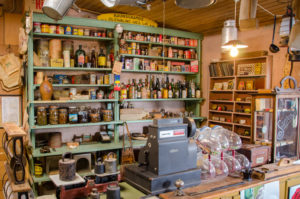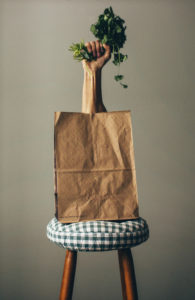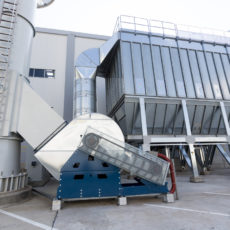A whopping 8 billion tons of plastic has been produced since it started being manufactured in significant quantities just 60 years ago; 5 billion tons of that has been improperly disposed of as waste. It seems like a no-brainer: ban plastics as soon as possible! Like a kid who doesn’t appreciate his toy, society hasn’t proven that it’s been able to handle the privilege of plastic. However, even with this enormous waste, it’s not a clear-cut victory for paper in the “Paper or Plastic?” battle royale. The truth is, though there are huge drawbacks to using plastics, paper products just can’t compete with some of the benefits they provide.
Paper packaging requires enormous amounts of energy to produce. The task is daunting. Imagine taking up an ax and chopping down a tree, then somehow getting it to splinter into a million tiny pieces, mixing it in water so that it becomes a mulch or a sort of paste, and finally squeezing it through gigantic rollers to get it paper thin. That’s enough to get Paul Bunyan sweating!
This is one of the central tenets that swrm hopes to drive home: energy is energy is energy. Isaac Newton’s three laws can be summed up (very simply) as saying, “It takes force to create movement.” In the case of paper products, it takes a whole lot of force to turn a tree into a ream of paper. So much so that it is estimated to be the fourth largest industrial use of energy on the planet.
Plastics, on the other hand, use comparatively little energy to produce. It takes a little voodoo science, but all it really entails is the continual refinement of crude oil until little pellets of plastic pop out. Then it’s dealer’s choice on how to turn those pellets into water bottles or straws or plastic bags, which studies show requires less than 50% of the energy it takes to produce a paper bag.
What complicates the matter more is that a paper bag produces upwards of 3 times the greenhouse gas emissions than does a plastic bag. Part of the explanation for this comes from one of its strongest points: paper is an organic material. When the 33% of paper that isn’t recycled rots on the side of the road, it produces methane. Methane is the most vicious of the greenhouse gases. It doesn’t stay around for as long as carbon dioxide, but while it’s here it just tears straight through the ozone.
Conversely, plastics biggest weakness is it’s greatest strength in this case. Though it has the potential of massacring the environment with the amount of chemicals it contains, plastic doesn’t rot. It just sticks around- for hundred (if not thousands) of years. It keeps all that destruction packed tight in pretty little polymer molecules. So maybe that explains why 91% of plastics don’t get recycled; it won’t hurt until later.
Of the five billion tons of unrecycled plastic mentioned earlier, most of it will find its way into the ocean until, by 2050, there will be more plastic in the ocean, ton for ton, than fish. The beauty of the environment is that it’s on a continual loop: it’s a self-cleaning system. Having this much plastic in the water is like putting a plastic cap on the water cycle. Since, as evolution teaches, everything crawled out of the oceans, it begs the question: how will this in turn impede the flow of human development?
But that’s much too airy-fairy and you haven’t the time when, at checkout, you’re asked “Paper or plastic?” and there’s a baby crying a couple places behind you in line. The truth is, it almost doesn’t matter, because there are benefits and drawbacks to both. Whatever you do get: recycle! Take your plastic bags to a local collection center; throw your paper in the right bin. This will ensure that the impact to the environment has been minimized to the greatest extent possible considering the circumstances.
There is a caveat: plastic is a tricky little sucker to recycle. There are so many different kinds, all with fancy acronyms, and they tend not to get along with each other. Sorters at recycling plants must remove the labels, clean out the moldy old peanut butter from the jars, and take absolute care not to mix and mingle plastics. It’s a hefty task because certain plastics look and feel like other types of plastics, but it’s incredibly important: just one PVC bottle mixed in with 10,000 PET bottles will spoil the whole batch! And even if the batch comes out alright, a lot of recycled plastic can only be used to make “lower-grade” products, like carpets and fleece jackets. Paper, on the other hand, recycles much more easily and is quite effective: recycled paper requires only 60% of the energy needed to produce paper from scratch.

You may, however, want to consider supporting your local public radio station, if only for the awesome tote bags they give out during member drives. Use ’em if you got ’em, however, as clothe tote bags do in fact require a significant amount of energy to produce. The next step, would be to ensure that the energy used to manufacture paper or plastic comes from an eco-friendly, renewable source. That may tip the scales in favor of paper products because, if they are manufactured using solar energy, that further contains the environmental impact of paper when combined with proper recycling practices.


